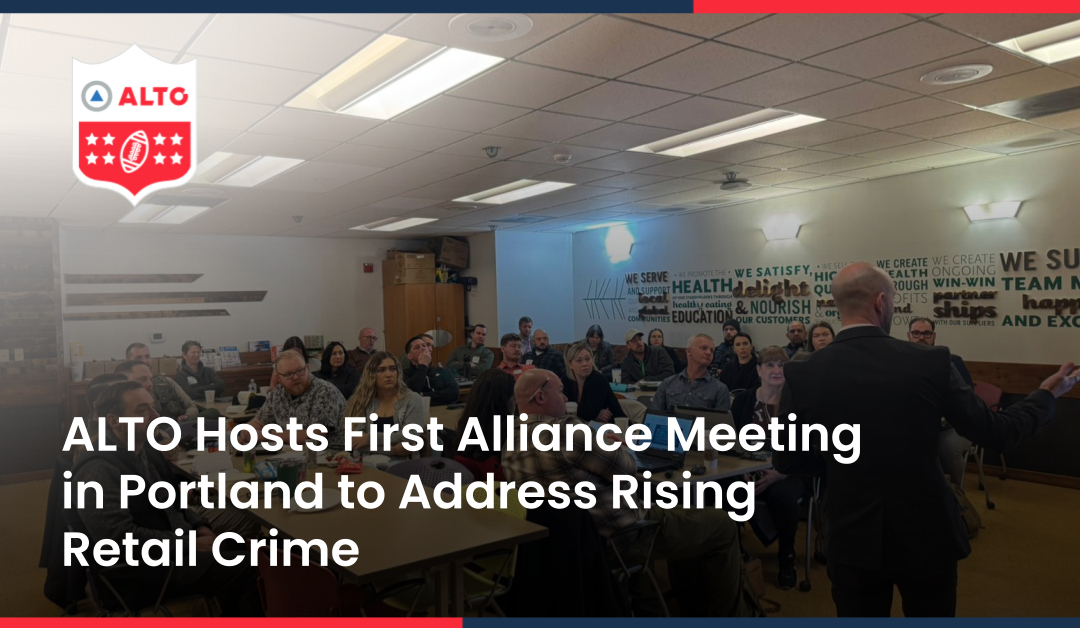By Cristian Lopez, CEO; originally published in Chain Store Age on April 22, 2024.
As “smash and grab” robberies and busts of covert “retail theft rings” become regular headlines across the country, stakeholders are contemplating how to address the growing problem that is retail crime in America.
Some blame the rise in crime on the post-COVID economy, while others point to the moral decay of our society. Origin story aside, the reality remains that retail crimes are occurring right now as you read, and, in some extreme cases, are compromising the safety of those shopping in the aisles and doing their jobs behind the counters.
As retail crime becomes more prevalent, so do discussions about solutions, from physical security and operational measures to technology and policy. However, what’s less frequently discussed is arguably the most effective component — collaboration and information sharing between retailers, law enforcement, state & district attorneys and community organizations to ensure that the proverbial baton is being passed to meet the end goal of lasting crime reduction and safer communities. Without dedicated teamwork and an effort to connect the dots, more retail crimes will slip through the cracks and the cycle of behavior will continue.
Before discussing the solution at length, it’s important to define the scope of the problem. According to the FBI, organized retail crime (ORC) costs the US $30 billion a year. While the financial cost is considerable, the larger issue is that ORC activity can turn any store into a danger zone. So far in 2024, nearly a quarter of ALTO legal cases involve a violent offender charged with battery, assault, property damage or armed robbery—and this doesn’t include the many retail crimes that go unreported.
Even police data only tells part of the story because, due to limited resources, retail crimes are notoriously difficult to resolve. When most cases are dropped, retail workers understandably lose motivation to report crimes in the first place, and retail crime, including ORC, persists as a public safety issue.
Retailers recognize this threat and are widely experimenting with solutions to deter criminal activity. Think security guards, cameras, lock boxes, metal detectors, ink tags, alarm systems and even innovative AI programs. Unfortunately, while these measures are important deterrents that may keep an impulsive offender at bay, they have not been enough to prevent many seasoned organized retail criminals. These offenders take advantage of gaps in the system that allow the cycle of organized retail crime to prosper. ALTO attorneys who advocate on behalf of retail crime victims speculate that four out of five of cases they participate in involve a repeat offender.
Resolving retail crimes is tricky because often the cost of the item or items stolen is less than the resources required to hold a criminal accountable. Only 5% of retail crime cases navigate through the judicial system. If an incident occurs, it is rarely reported to the police because, when it is, it’s often deprioritized. If reported, several challenges can prevent a case from being resolved.
These include a lack of evidence, failure to coordinate witnesses or victims (retailers), a lack of case tracking, technicalities and the widespread misconception that retail theft is a victimless crime can all lead to a dropped case and lack of consequences that allow the criminal to continue offending. Without support through this “last mile” of asset protection strategies, lock boxes and ink tags are only addressing the problem at the surface, not the root.
A promising development is the success of new ORC laws introduced with the help of retail stakeholders and policymakers in states like Oregon, Minnesota, Florida and New Mexico. However, according to ICSC, they are among only 16 states where lawmakers are currently addressing retail crime with newly introduced legislation, and only 13 states have dedicated ORC taskforces.
Drafting policies on organized retail crime is certainly an important step toward fixing the issue, but without the effort and collaboration from stakeholders, they will not be implemented, and the same gaps that have fed the ORC cycle will continue to grow and be exploited.
A long-term solution to organized retail crime requires in-store deterrents, but it also requires follow-through that addresses the gap between the private and public sectors that enables ORC to thrive. Retailers need to take measures to ensure that frontline workers feel empowered to report crimes and that offenders will be held accountable for their actions. It’s impossible to solve the problem if criminals think and, in some cases, know they can get away with it.
Establishing an alliance between retailers, law enforcement, prosecutors, nonprofit organizations, and government officials is a proven strategy to effect real, long-term change. It’s time to organize more task forces, coordinate meetings, reallocate resources and take better advantage of the systems in place to deter criminal behavior from the backend as much as from storefronts. The future of brick-and-mortar retail depends on it.
Cristian Lopez is CEO of ALTO, a new approach to retail crime reduction that uses its own system of resources to help keep businesses and the communities they occupy safe, leveraging a combination of locally based legal teams, incident reporting technology and on-the-ground teams to help businesses fight and prevent crime.



